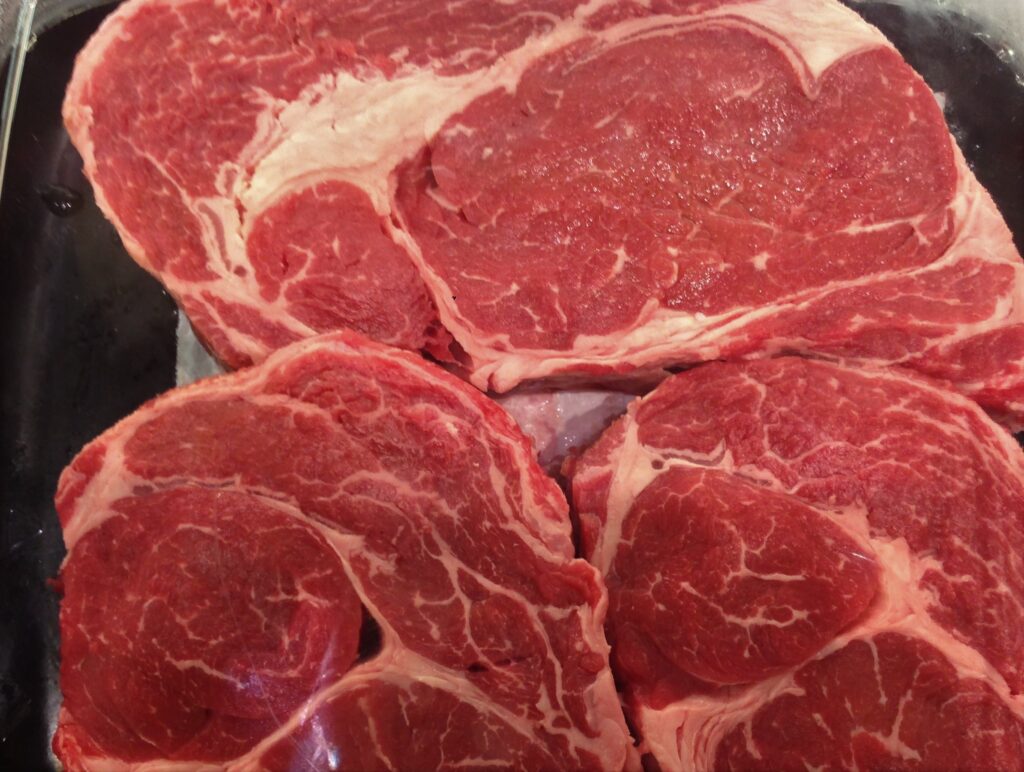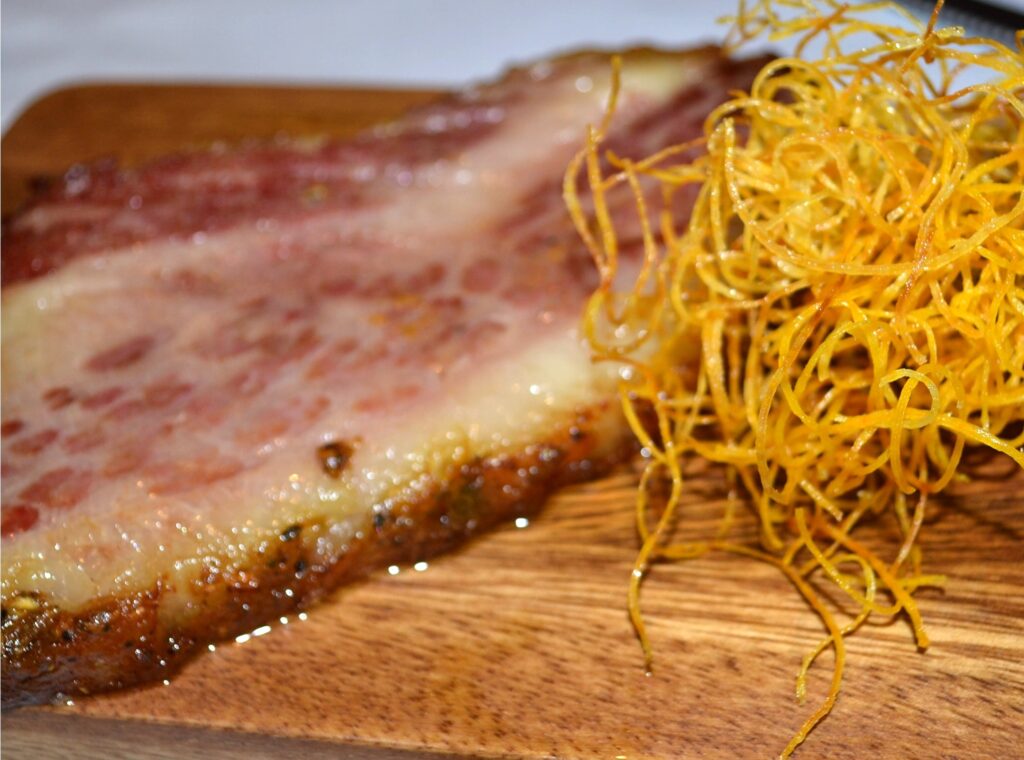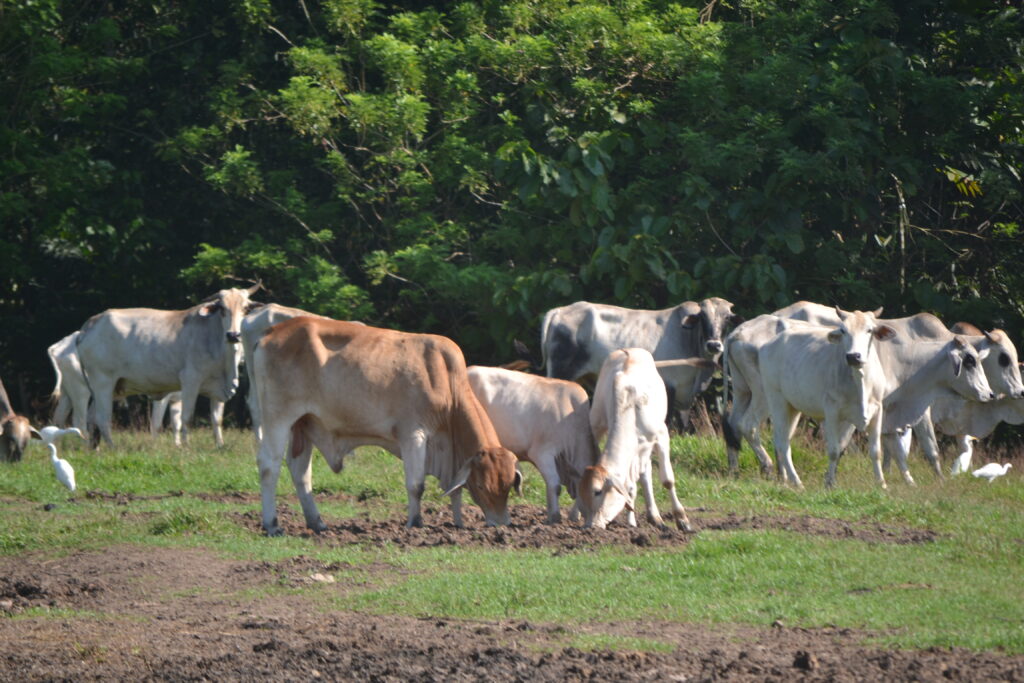Text and Photos by Henrylito D. Tacio
Cattle — colloquially cows — are the most common type of large domesticated animals. They are raised as livestock for meat (beef and veal), as dairy animals for milk and other dairy products, and as draft animals (oxen or bullocks that pull carts, plows, and other implements). Other products include leather and dung for manure or fuel.
In the Philippines, raising cattle is not a popular income-generating project despite the high marketability of beef, the cattle meat. As a matter of fact, cattle farmers are found only in Batangas, Tarlac, Pangasinan, Masbate, Mindoro, Iloilo and Cotabato.
But in recent years, cattle fattening has gained prominence as an important business project of the livestock industry. It gives the year-round farmer work and provides him with extra income while engaging in his non-agricultural occupation. He does not spend money on feeds. After all, he can give them those cheap, plentiful farm by-products such as corn stovers, rice straw, copra meal, rice bran, and sugarcane tops, which ordinarily go to waste.
Losses are also minimal. Cattle are less prone to diseases and parasites since they are confined and the fattening period is short. It takes only 120-180 days to fatten the cattle of feeder stock for the market. At this point, the animal already weighs 275-325 kilograms and is ready for slaughter.
“Backyard cattle fattening or on a large scale can be profitably undertaken,” says the Department of Agriculture (DA). “It consists of buying healthy stock, feeding and fattening them for 120 to 180 days, and selling them at any time of the year. Minimum space for housing is required: 1.5 to 2 square meters per head for a sheltered feeding area, and 5 meters per head for a fenced loafing area.”
There are several breeds of cattle to choose from. The most common is the indigenous cattle breed found throughout the country. It is a small breed with mature bulls weighing about 400 kilograms and mature cows weighing about 300 kilograms. The color ranges from grey to brown to fawn, with white spotting on some animals. Four breed types have been recognized, the Ilocos in northern Luzon, Batangas in southwestern Luzon, Iloilo on Panay and Batanes on the Batanes Islands between Luzon and Taiwan.
Other breeds found in the country are Ongole, Nellore, Brahman, Angus, Beefalo, Beemaster, Belmont Red, Indu-Brazil, Brahford, Brangus, Charbray, Charolais, Chianina, Droughtmaster, Galloway, Limousin, Santa Gertrudis, Shorthorn, Simbrah, Simmental, and Grauvieh.
Some breeds, like the Holstein-Friesian, Jersey, Sahiwal, Red Sindhi, Tharparkar, and Brown Swiss, may be raised not only for their meat but also for milk.
To make a profit and produce good meat, raisers are advised to consider the following points: age, gender, breed, and health.
Age: The DA recommends two to three year- old animals. “They need less feed for every unit of weight gain because they digest more efficiently and consume a larger volume of feed in proportion to body weight,” it explains. “Younger animals cost less because of lesser weight. They require longer periods of feeding and higher feed quality to reach the desired finish.”
But older feeder stock (4 years and above) also have their advantages. “They need less time in the feedlot and will eat a wider variety of feed and roughage than young stock,” the DA says. “If nutritious feed is abundant, younger cattle are generally more economical to fatten. If only roughage and plant by-products are available, older stocks are preferable.”
Gender: The agriculture department suggests steers (castrated males) than heifers (unbred females) because the former are readily available and easier to manage. “Steers also gain weight and grow faster than heifers,” it adds.
Breeds: Several breeds have been mentioned earlier, but DA recommends improved breeds and crossbreeds as they gain weight faster than native animals. Tropical breeds are more adaptable to local climatic and feed conditions than temperate breeds.
The DA also goes for tropical breeds: Brahman, Ongole or Nellore, Indu-Brazil, and Batangas cattle. The color of Brahman is silver-gray, although some are reddish. This breed is resistant to diseases and can withstand heat better. White is the color of Ongole or Nellore. The bulls may have dark gray heads, necks, and humps. Knees may be black.
The colors of Indu-Brazil vary from light to silver-gray and brownish dark gray to red. The Batangas cattle is called so because of the Batangas beef, which has become popular due to its good quality cattle and produced by the “supak” method of Batangas.
Health condition: A healthy animal is alert and active, has bright eyes, a smooth hair coat, and a moist muzzle. Animals with rough skin and those who are blind and lame should be avoided.
In addition, the animals should have been properly vaccinated against common diseases before bringing them to the feedlot. If not, they must be referred to the nearest Bureau of Animal Industry office for vaccination against hoof-and-mouth disease and hemorrhagic septicemia.
Likewise, the animal must have a fecal examination to find appropriate deworming drugs. It is necessary to control external parasites with the right spray for ticks, lice, and flies.
Other traits or characters that must be considered, according to the book, Profitable Beef Cattle Management Practices, are size and conformation (physical appearance), average daily gain, rate of maturity (attaining a given or definite weight in the shortest possible time), beef value (dressing percentage), grazing ability, market value (carcass quality), fertility (calving intervals), disease resistance, weaning weight, heat tolerance (ability to withstand heat in the open) and birth weight.
“When buying cattle, it is cheaper to do so during the dry season (January to April),” Agribusiness Opportunities suggests. “Better road conditions make it easier to transport the animals during this period.”
Rearing and feeding
Here are more suggestions from the book on rearing and feeding:
The first few weeks in the feedlot are critical. Start the calves with roughage having a limited amount of concentrate, gradually increasing the volume of the mixture. A calf consumes about 3% of its body weight. Which means the ideal feed must have 12-14% moisture content under ordinary conditions.
Rations differ from region to region depending on available feeding materials. Different kinds of concentrates are possible with copra meal, rice bran, sugarcane tops, pineapple, or papaya leftovers mixed with molasses. (Molasses which makes the feed more appetizing, is a good source of energy.)
Forage — grasses and legumes — is a good feed supplement. Cattle can be given as much roughage, hay, rice bran, and molasses as they want.
Clean, drinking water for the animals is provided all the time. Rations should also include salt at the rate of 3-5 grams per head daily.
An effective method used by Batangas raisers is force-feeding (supak). In this method, which is used in addition to roughage feeding, the animal is force-fed with the following mixture: 15-20 kilograms of fresh ipil-ipil leaves (finely chopped and pounded), half kerosene can consist of clean water and a little salt.
Some raisers include urea in the feeding program as a non-protein supplement for ruminants. It must be remembered, however, that only recommended amounts should be given to the cattle because any excess is toxic to the animal.
Confine the animal to its feeding area so that it uses less energy and gains weight quickly. However, it can be tethered in grassy areas and exposed to sunlight for short periods.
The cattle must be washed at least once a week.
Housing
Proper housing is important in a successful cattle fattening operation, the DA says. Adequately protect animals against the adverse effects of weather when they are raised in relatively small areas. Animals in backyard cattle farms are usually tethered along roadsides and in backyards during the day and confined in a shed or corral at night.
The permanent type of housing consisting of GI roofing, timber frames, concrete floor, feed trough, and water troughs are used in most farms. The shelter is open-sided and is located near the farmer’s house or under the shade trees. Building height ranges from 1.7 to 1.9 meters, while the width varies from 2.1 to 2.7 meters. Each animal can be allocated 1.5 to 4.5 square meters.
Marketing
The current marketing system of beef cattle is now becoming efficient, especially in areas where there is a livestock auction market.
However, a number of middlemen are still involved in the system, thus creating a little complex marketing channel. In areas where there is no livestock auction market, the usual channel of distribution is set up in this order: barrio agents, shippers, Manila-based buyers, and meat retailers.
Marketing efficiency can be improved by reducing the number of stages in market channels. This can be done by encouraging direct selling from producers to butcher retailers or processors.




